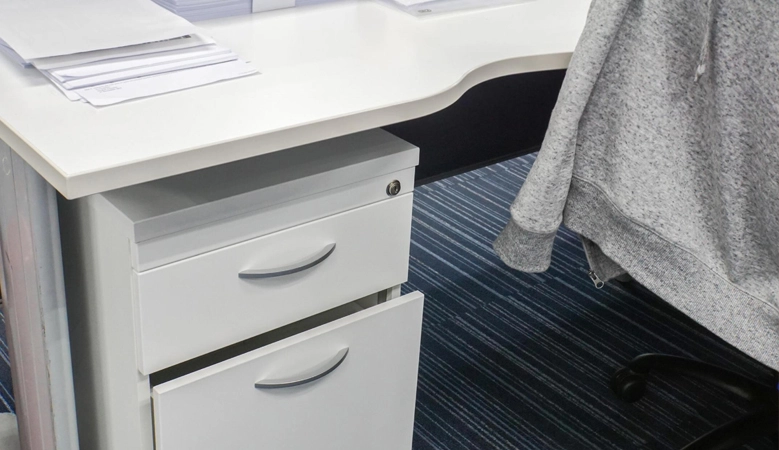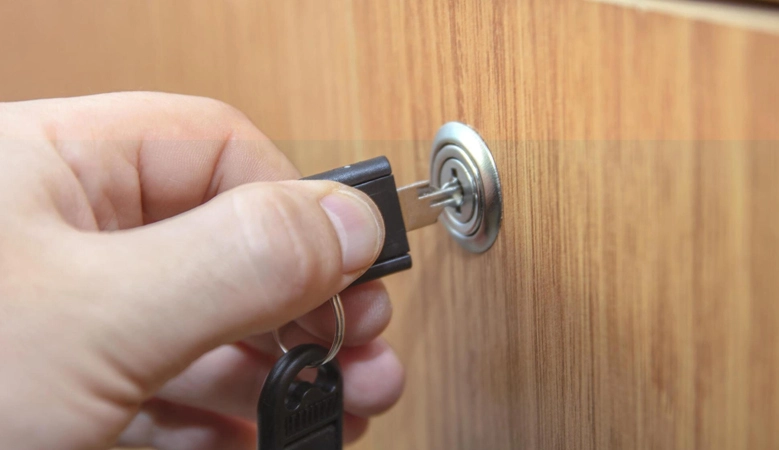Re-keying your cabinet locks is a crucial aspect of maintaining security within your home or office. By understanding the best methods for re-keying cabinet locks, you can ensure the safety of your belongings and property. Let’s delve into the step-by-step process to achieve this effectively.
Why Should You Consider Re-Keying Your Cabinet Locks?
Re-keying your cabinet locks offers a cost-effective solution to enhance security without the need for full lock replacement. Whether you’ve recently moved into a new space, experienced a security breach, or simply want to update your existing locks, cabinet lock & re-keying is essential. It allows you to invalidate old keys while retaining the same lock, offering peace of mind and security assurance.
Before embarking on the re-keying process, it’s crucial to gather the necessary tools. A standard re-keying kit typically includes a key gauge, plug follower, tweezers, and a set of new keys. Additionally, ensure you have a screwdriver and lubricant on hand for any necessary maintenance tasks.
How Do You Identify the Type of Cabinet Lock for Re-Keying?
Before diving into the re-keying process, it’s essential to identify the type of cabinet lock you’re working with. Common types include pin tumbler locks, wafer locks, and disc tumbler locks. Each type requires a slightly different approach to re-keying, so accurately identifying the lock ensures a smoother process. Look for any manufacturer markings or unique characteristics to determine the type accurately.
What Precautions Should You Take Before Re-Keying Cabinet Locks?
Before initiating the re-keying process, take precautions to ensure safety and efficiency. Start by clearing the surrounding area of any clutter or obstacles to provide ample workspace. Additionally, wear protective gear such as gloves and safety glasses to prevent injury. Finally, ensure you have a backup plan in case of any unexpected issues, such as contacting a professional locksmith shop in JLT for assistance.

Can You Re-Key Different Types of Cabinet Locks with the Same Method?
While the general concept of re-keying remains consistent across different types of cabinet locks, the specific method may vary. Pin tumbler locks, for example, require a different approach than wafer locks due to their internal mechanisms. It’s essential to familiarize yourself with the specific requirements of each type of lock to ensure successful re-keying.
What Are the Common Mistakes to Avoid When Re-Keying Cabinet Locks?
Avoiding common mistakes is crucial to achieving successful results when re-keying cabinet locks. One common error is failing to properly align the pins during the re-keying process, resulting in a faulty lock mechanism. Additionally, rushing through the process without attention to detail can lead to errors that compromise security. Take your time, follow each step carefully, and double-check your work to avoid these pitfalls.
How Long Does It Typically Take to Re-Key a Cabinet Lock?
The time required to re-key a cabinet lock can vary depending on factors such as the type of lock, your level of experience, and any unforeseen complications. On average, however, a straightforward re-keying process can be completed in 15 to 30 minutes per lock. Complex locks or unfamiliarity with the process may extend this timeframe, so allocate sufficient time for each task.
What’s the Difference Between Re-Keying and Replacing Cabinet Locks?
Understanding the distinction between re-keying and replacing cabinet locks is essential for making informed security decisions. Re-keying involves altering the internal components of an existing lock to work with a new key, while replacing entails removing the old lock entirely and installing a new one. Re-keying is often a more cost-effective and efficient solution when the existing lock is in good condition and security needs to be updated.
Are There Any Alternative Methods for Re-Keying Cabinet Locks?
In addition to traditional re-keying methods, alternative approaches such as smart lock conversion kits offer modern solutions for enhancing cabinet security. These kits allow you to retrofit existing cabinet locks with electronic components, providing keyless entry and remote access capabilities. While more expensive than traditional re-keying, smart lock conversion kits offer added convenience and functionality.
What Maintenance Tips Can Prolong the Effectiveness of Re-Keyed Cabinet Locks?
To prolong the effectiveness of re-keyed cabinet locks, regular maintenance is key. Keep the locks clean and lubricated to prevent buildup and ensure smooth operation. Periodically inspect the locks for any signs of wear or damage, and promptly address any issues to prevent security vulnerabilities. Additionally, avoid excessive force when operating the locks to prevent unnecessary wear and tear.
In conclusion, mastering the art of cabinet lock & re-keying is essential for maintaining security and peace of mind in any residential or commercial setting. By following a step-by-step guide and taking necessary precautions, you can effectively re-key your cabinet locks to enhance security without the need for full replacement. Remember to gather the required tools, identify the type of lock accurately, and avoid common mistakes to achieve optimal results. If you encounter any challenges during the process, don’t hesitate to seek assistance from a reputable locksmith shop in JLT. With proper maintenance and attention to detail, your re-keyed cabinet locks will continue to provide reliable security for years to come.
For expert assistance with cabinet lock re-keying and other locksmith services in JLT, contact KME Locksmith Dubai at +971-52-9533381.
